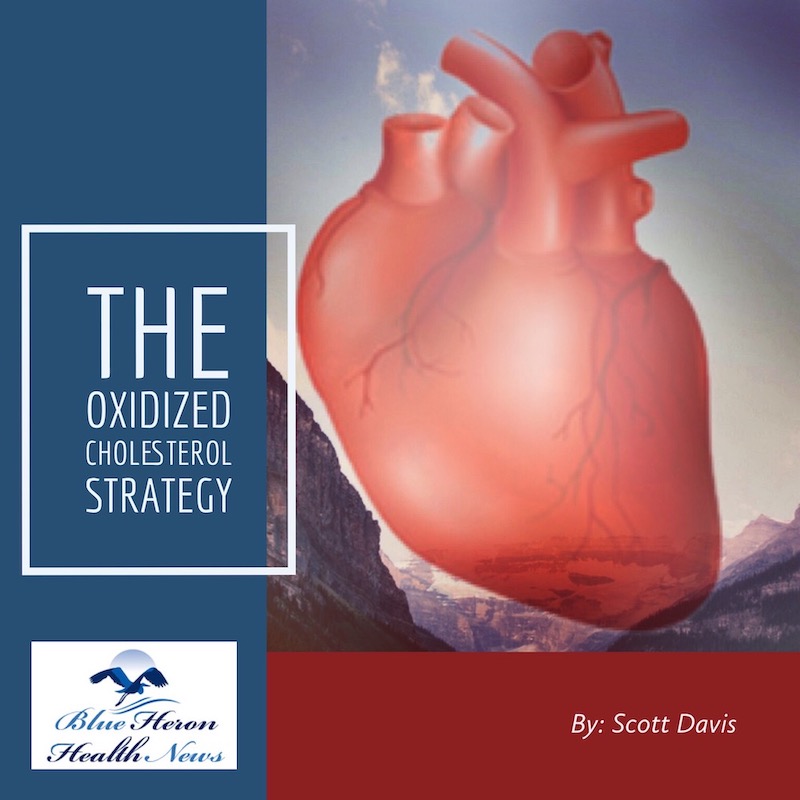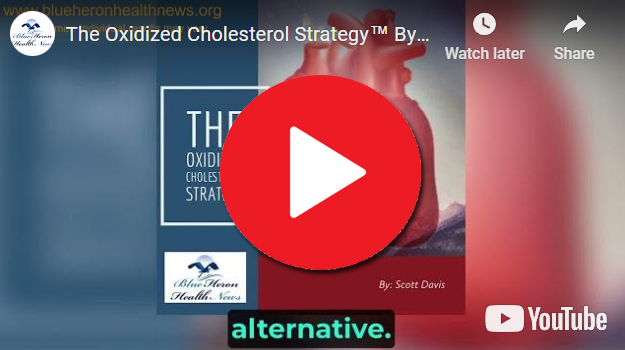
The Oxidized Cholesterol Strategy™ By Scott Davis The Oxidized Cholesterol Strategy is a well-researched program that reveals little known secret on how to tackle cholesterol plaque. This program will tell you step by step instructions on what you need to completely clean plaque buildup in your arteries so as to drop your cholesterol to healthy level.
How does exposure to toxins influence cholesterol oxidation?
Exposure to toxins can significantly influence cholesterol oxidation, which can, in turn, impact overall health by contributing to oxidative stress, inflammation, and the development of various diseases. Toxins, whether environmental, industrial, or biological, can induce the production of free radicals and reactive oxygen species (ROS), which are key factors in the oxidation of cholesterol. Here’s how exposure to toxins can influence this process:
1. Increase in Oxidative Stress
- Free Radical Generation: Many environmental toxins, such as cigarette smoke, air pollution, heavy metals, pesticides, and industrial chemicals, generate free radicals and ROS when they enter the body. These highly reactive molecules can interact with cholesterol molecules, particularly low-density lipoprotein (LDL) cholesterol, leading to oxidation. Oxidized LDL is known to play a central role in the development of atherosclerosis and other cardiovascular diseases.
- Impaired Antioxidant Defense: Exposure to toxins can overwhelm the body’s natural antioxidant defenses. Antioxidants like vitamins C and E, glutathione, and superoxide dismutase are responsible for neutralizing free radicals and ROS. However, chronic exposure to toxins can deplete these antioxidants, making the body more susceptible to oxidative damage, including cholesterol oxidation.
2. Promotion of Inflammation
- Inflammatory Cascade: When cholesterol is oxidized, it can trigger an inflammatory response in the body. This is because oxidized cholesterol (oxLDL) is recognized by immune cells like macrophages and endothelial cells as a foreign substance. These cells respond by releasing pro-inflammatory cytokines, such as TNF-α and IL-6, which can cause widespread inflammation in tissues and blood vessels. Chronic inflammation can contribute to atherosclerosis, metabolic syndrome, and other cardiovascular problems.
- Activation of Inflammatory Pathways: Toxins like those found in cigarette smoke or industrial pollutants can directly stimulate inflammatory pathways, further amplifying the harmful effects of oxidized cholesterol. This synergistic effect of toxin exposure and cholesterol oxidation accelerates the development of chronic diseases.
3. Impairment of Lipid Metabolism
- Alteration of Lipid Profiles: Exposure to certain toxins, such as those in polluted air or from alcohol abuse, can alter lipid metabolism, leading to increased levels of LDL cholesterol, which is more prone to oxidation. Additionally, these toxins can reduce the effectiveness of the liver in processing lipids, causing imbalances in lipid levels that make the body more vulnerable to oxidative damage.
- Changes in Lipoprotein Composition: Toxins can also modify the composition of lipoproteins, such as HDL (high-density lipoprotein) and LDL. For example, they may reduce the protective role of HDL, which normally helps remove excess cholesterol from the bloodstream. This can result in a greater buildup of LDL cholesterol, which is more susceptible to oxidation.
4. Toxins and Cholesterol Metabolism in the Liver
- Liver Toxicity and Cholesterol Synthesis: The liver plays a central role in cholesterol synthesis and metabolism. Chronic exposure to toxins, particularly heavy metals and certain chemicals, can impair liver function and alter cholesterol production. A compromised liver may not metabolize cholesterol effectively, leading to the accumulation of LDL cholesterol in the bloodstream, which increases the likelihood of oxidation.
- Disruption of Cholesterol Homeostasis: Toxins can disrupt the balance between the synthesis, transport, and elimination of cholesterol. This dysregulation can lead to higher concentrations of cholesterol available for oxidation, especially in vulnerable tissues such as arterial walls, where oxidized cholesterol contributes to plaque buildup.
5. Exposure to Specific Toxins
- Cigarette Smoke: Smoking is one of the most well-known sources of environmental toxins that promote cholesterol oxidation. The chemicals in cigarette smoke, such as benzene, nicotine, and carbon monoxide, increase the production of ROS in the body, leading to the oxidation of LDL cholesterol. This process is a key factor in the development of cardiovascular disease and atherosclerosis in smokers.
- Air Pollution: Exposure to fine particulate matter (PM2.5) and other pollutants in the air has been shown to increase oxidative stress and the oxidation of lipids, including cholesterol. This is particularly concerning in urban areas with high pollution levels, where prolonged exposure can accelerate the development of cardiovascular diseases.
- Heavy Metals: Heavy metals like lead, cadmium, and mercury are toxic environmental pollutants that can increase oxidative stress in the body. Studies have shown that these metals can enhance the oxidation of cholesterol and contribute to the development of cardiovascular diseases, particularly when exposure is chronic.
- Pesticides and Industrial Chemicals: Pesticides, herbicides, and industrial chemicals like polychlorinated biphenyls (PCBs) can also induce oxidative stress, leading to the oxidation of cholesterol and other lipids. Chronic exposure to these toxins can elevate the risk of cardiovascular diseases and other health issues related to cholesterol metabolism.
6. Effect of Toxins on the Endothelium
- Endothelial Dysfunction: The endothelial cells that line blood vessels are particularly sensitive to oxidative damage from toxins. Oxidized cholesterol (oxLDL) can damage endothelial cells, leading to endothelial dysfunction, which is a precursor to atherosclerosis and cardiovascular disease. Endothelial dysfunction results in a reduction of nitric oxide production, which impairs vasodilation and increases the risk of high blood pressure and plaque buildup in the arteries.
- Increased Risk of Atherosclerosis: As oxidized cholesterol accumulates in the blood vessels, it promotes the formation of plaques, leading to the thickening and hardening of the arterial walls. This process, known as atherosclerosis, is strongly linked to toxins like those found in cigarette smoke and air pollution, which can increase the rate of cholesterol oxidation and accelerate plaque formation.
7. Immune System Activation
- Oxidized Cholesterol and Immune Response: As oxidized cholesterol circulates in the bloodstream, it can be recognized by the immune system as a danger signal, triggering an immune response. The immune system releases pro-inflammatory cytokines in response to the presence of oxidized lipids, contributing to systemic inflammation and increasing the risk of chronic diseases such as cardiovascular disease, diabetes, and neurodegenerative diseases.
- Chronic Inflammation: The combination of toxin-induced oxidative stress and the immune response to oxidized cholesterol creates a vicious cycle of chronic inflammation that can lead to a variety of health issues, including vascular damage, insulin resistance, and other metabolic disorders.
Conclusion
Exposure to toxins accelerates cholesterol oxidation through the generation of free radicals and the disruption of normal lipid metabolism. This oxidative modification of cholesterol plays a significant role in the development of atherosclerosis, cardiovascular diseases, and metabolic disorders. Managing toxin exposure, improving antioxidant defenses, and maintaining a healthy lifestyle are important strategies for reducing the harmful effects of oxidized cholesterol on health.
The Oxidized Cholesterol Strategy™ By Scott Davis The Oxidized Cholesterol Strategy is a well-researched program that reveals little known secret on how to tackle cholesterol plaque. This program will tell you step by step instructions on what you need to completely clean plaque buildup in your arteries so as to drop your cholesterol to healthy level.
